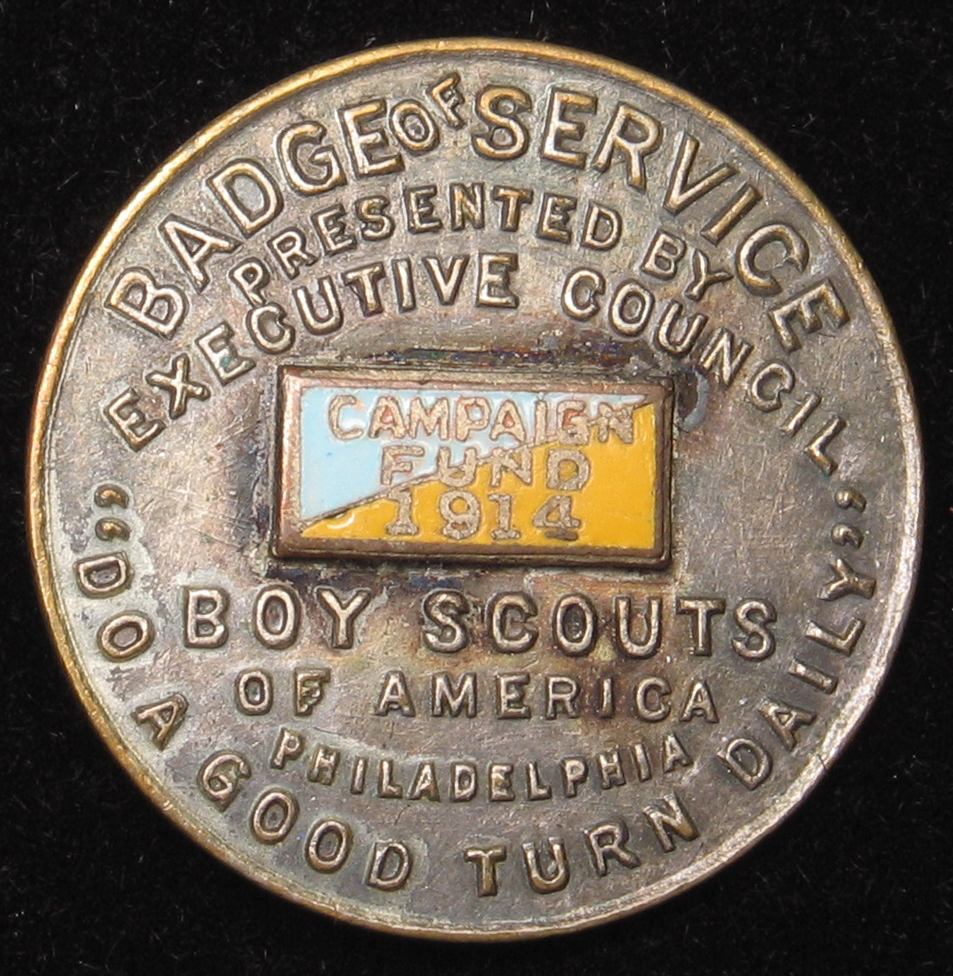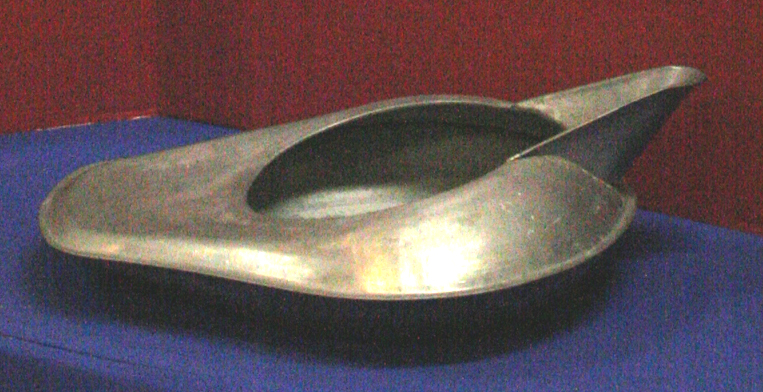"Service" Influences Formation
From 1914 – 1916 the Philadelphia Council led by Scout Executive Walter S. Cowing used “Service” as its watchword. In 1914 the council recognized deserving individuals with a special “Badge of Service” pin.

From 1914 – 1916 the Philadelphia Council led by Scout Executive Walter S. Cowing used “Service” as its watchword. In 1914 the council recognized deserving individuals with a special “Badge of Service” pin.

When the Treasure Island staff planned the first induction, Urner Goodman had one Scout in mind as the model of cheerful service he wanted for its members - Billy Clark. Billy was a member of Philadelphia's Troop 1, led by Scoutmaster Goodman and is listed in their records as an “Assistant Scribe.” Years later Goodman described a troop campout at Treasure Island.
One time during our stay there, one of our charges came with a minor sickness. There was no medicine, no hospital on the island at all. So he had to stay in his tent and he had to be taken care of. Billy volunteered to be our live-in nurse for the two or three days he had to be there. And he did a good job of it.
Came to a crisis however the next morning. It had rained during the night. Now, there is a vessel used in hospitals they call a bedpan. And it was time to take that thing to the latrine and Billy, of course, cheerfully took on the assigned visit. However, in going from the tent to the latrine he had a little upset. It was the wrong kind of bath, to be put lightly. But Billy got up smiling from it all, if you can imagine. Now that's the picture of cheerful service.

1, Founders, Goodman, OA, Profile, Scouting
In 1915 I joined the staff of the Philadelphia Council, the head of the Field Department being E. Urner Goodman, afterwards Scout Executive of Philadelphia, and then of Chicago, and now a department head at the National Office.
Urner was designated as Director, and I as Co-Director of Treasure Island, the Philadelphia Camp. I found they had an award called “Treasure Island Scout”, for which an emblem TIS, was presented. The award was based on a point system, similar to a troop contest, so many points for passing tests, identifying nature objects, etc., etc. It seemed to me there should be some recognition of the spirit of Scouting, as the TIS was of the mechanics.
It happened that about that time I attended a meeting where Ernest Thompson Seton was the speaker, and he gave a splendid presentation of the value he had found in using an idealization of the Indian, in his work with boys, and it seemed to me that that gave the answer to the problem I had been considering.
I accordingly suggested to Urner that we organize an Indian lodge as our highest camp award, selection to be based on the demonstration of living the Scout Oath and Law. He agreed.”
--- Excerpted from Col. Edson’s 1942 letter to Moqua Chapter for their 20th Anniversary celebration
Edson was excited by his encounter with Ernest Thompson Seton and brought the idea back to Goodman and Treasure Island. The idea blossomed and became the Camp Honor Fraternity – Wimachtendienk.